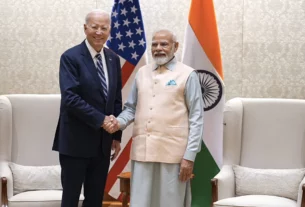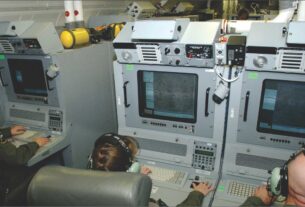Soldier modernization and FINSAS
Going by published material it appears that the future infantry soldier of the Indian Army has already received all that his heart desired by way of the most modern weapons and equipment required to fight a ‘hybrid’ war of combined conventional and sub-conventional features.
From ten different sources around the world all that is needed for use on the battlefield from handguns to heavy machine guns have been bought and inducted except the central raison d’etre for the massive change- the multi-calibre individual weapon (5.56mm, 7.62mm and 6.8mm) – is still undergoing user trials.
The accent on acquisitions has clearly been in acquiring lightweight weapons for the various different types of Special Forces of which India has a multiplicity.
Skimming through the list of Equipment Of Indian Army on Wikipedia one cannot but wonder at what is going on in the name of modernization of the Indian infantry soldier.
Two types of 9mm semi-automatic pistols have been inducted, one of licence-produced Canadian origin and the other made in Austria of superior high-end plastic which is lighter and appropriately acquired for Special Forces. Could not one be used by both forces, the lighter the better?
Foreign dependence
Two 9mm submachine guns one from Israel and one from Germany have been inducted to replace the British era weapon. Five assault rifles have been bought; they include three of 5.56 calibre and two of 7.62mm calibre from three different suppliers, the Israeli Tavor, the Russian Kalashnikov and the redoubtable American M-16 are now part of the Indian arsenal.
Six sniper rifles of the same calibre-7.62 (51 mm caliber) have been acquired, four from one source (Germany)-and include all the world class manufacturers of infantry weapons- and one from Israel and one from Russia (clearly an attempt has been made not to hurt anyone’s feelings).
Does India really need one type of weapon from three different sources?
The one saving grace in all the talk about “Make in India’ and indigenous defence production is the Vidhwanshak anti-material rifle of 12.7×108mm and 20x82mm calibres which are used for bunker-busting and destroying concretised structures and soft vehicles and gun and missile carriages.
In the midst of this plethora of foreign weapons, admittedly some of the best weapons in their respective classes, what chance do infantry weapons designed and developed Indian laboratories of breaking into this charmed circle by dint of superior qualities.
It has already been decided that the indigenously created Indian Small Arms System (INSAS) is to be discarded. Its faults brought out glaringly, the cutthroat international arms market, did the rest as is abundantly clear in the above narrative.
Much the same is likely to happen to the offshoot of the INSAS project – the creation of the misnamed Excalibur (the original was a sword) 5.56 mmx45mm assault rifle by the Ordnance Factories Board.
After waffling for several years over the qualitative staff requirements for the weapon Army HQ came up with the proposition as recently as October, 2016 that the Excalibur could be inducted into service with the troops till a replacement is found.
By this formulation it will not be difficult to kill the project in the cradle.
This is how: The range of the Excalibur has a reach of 450 meters. At least one of the rifles that have already been purchased (the Israeli Tavor) has a range of 550 meters).
Will Army HQ not find it a good excuse to dump the Excalibur because it has a range of only 450 meters? So why the farce?
Similarly, much is being made of the multi-calibre individual weapon system because it can fire three different caliber of bullets from the 5.56X45mm to the 7.62mmX39mm and the 6.8mmX43mm length depending on the terrain and geography of the landscape. (The numerals denote the diameter of the base of the bullet multiplied by the length).
The reason for the shift in caliber from the 7.62 self-loading rifle manufactured at the Icchapore Rifle factory about two decades ago was the concept that it is better to wound an enemy in battle than to kill him because evacuating a wounded soldier would tie down at least four persons from his squad and hence reduce the enemy firepower.
Future needs
However, with the advent of the ’hybrid’ type of warfare where guerrilla tactics and sub-conventional warfare is fought as part of the conventional milieu. As such the need for the defender to be the first to shoot to kill has become the paramount philosophy of weapon evolution.
Also, one of the rationales for the reduction of bullet’s caliber was the need to reduce the total weight carried by a soldier into battle. The logic was that a shorter bullet is a lighter bullet.
The pendulum appears to be shifting in the opposite direction with the introduction of the 6.8mmX 43mm bullet where the clear intention is to introduce a greater blast effect that would affect wound ballistics significantly making it very difficult if not impossible for a wounded man to survive because of the extensive internal damage.
As regards the all-up weight of the multi-calibre weapon if the current single configuration produces a weapon of about 4 kg a combination of two would double the weight to 8 kg and if the soldier is required to carry all three barrels along with loaded magazines for each would mean an additional load of up to 12 kg.
As for the proclaimed accuracy of the imported small arms, accuracy beyond 100 meters depends on the kind of sighting equipment that can be attached to the weapon.
Reports from Afghanistan of snipers being able to knock out Taliban commanders as far away as 2.5 km was made possible by the sighting equipment mounted on the rifle to be able to see the target clearly over that distance before the sniper can bring his other attributes of being able to control breath and heartbeat and guage wind speed that could deflect the bullet to reduce barrel waver/oscillation.
When the Future Infantry Soldier As A System (F-INSAS) programme was abandoned in favour of two separate projects each dealing with weapons and accoutrement (clothing, safety equipment bulletproof jackets and helmets, and sensors) and the second related to an efficient and failsafe Battlefield Management System it was emphasized that safety of the soldier would be emphasized.
While bulletproof vests can be improved by a better weave of the Kevlar material; claims of a failsafe headgear are misleading. While it is true that modern helmets can stop certain calibers of bullets this is demonstrated on rigid lifeless mannequins.
No reallife shots are publicized because the effect on a human head on being hit by a bullet while wearing a helmet can be concussive and cause brain damage, the kinetic effect of a bullet strike will always have a destructive effect on the neck.
India learned this from the deaths that occurred in Kargil with the Pakistani intruders shooting at the steel patkas worn by Indian soldiers.
The Battlefield Management System project has attracted two consortia of two Indian private sector firms each. Both have submitted their plans to the Ministry of Defence to link the soldier on the frontline with command headquarters at different levels. Network centricity will be the heart of the project.




